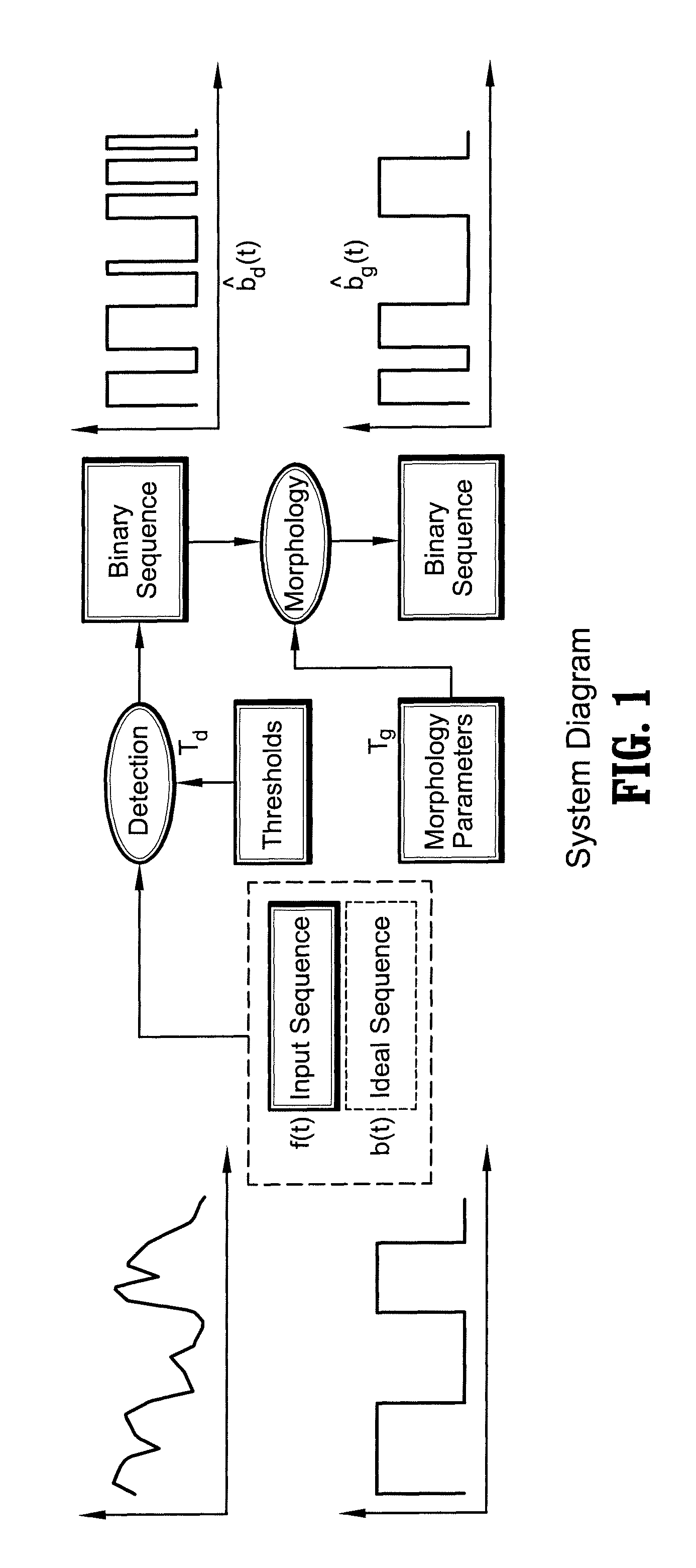Automatic design of morphological algorithms for machine vision
a machine vision and automatic design technology, applied in the field of pattern analysis, can solve the problems of often questionable robustness of these systems, and achieve the effect of maximizing the expected classifier performan
- Summary
- Abstract
- Description
- Claims
- Application Information
AI Technical Summary
Benefits of technology
Problems solved by technology
Method used
Image
Examples
case example
Statistical Markov Case Example
[0074]The right graph in FIG. 6 shows the EMC model for calculating the Hamming distance after closing when the background model b(t) has the first order Markov property. Note the use of an additional variable, L, in the state variable. It is needed to keep track of the previous state (i.e., the ground truth) value at t−1. Details of the state transition probability equations are omitted due to lack of space.
Statistics for Close-Open Operator Sequences
[0075]Previously, a method was introduced to calculate the Hamming distance distribution after a morphological closing by using the EMC approach. Next, it will be shown how to generalize the EMC approach to get the statistics of close-open or open-close operator sequences. The main idea is to use more state variables to save all the temporary information and to extend the graph from a single layer representation to a multi-layered graph.
[0076]As one example to show how to generate the state space and tran...
PUM
 Login to View More
Login to View More Abstract
Description
Claims
Application Information
 Login to View More
Login to View More - R&D
- Intellectual Property
- Life Sciences
- Materials
- Tech Scout
- Unparalleled Data Quality
- Higher Quality Content
- 60% Fewer Hallucinations
Browse by: Latest US Patents, China's latest patents, Technical Efficacy Thesaurus, Application Domain, Technology Topic, Popular Technical Reports.
© 2025 PatSnap. All rights reserved.Legal|Privacy policy|Modern Slavery Act Transparency Statement|Sitemap|About US| Contact US: help@patsnap.com



